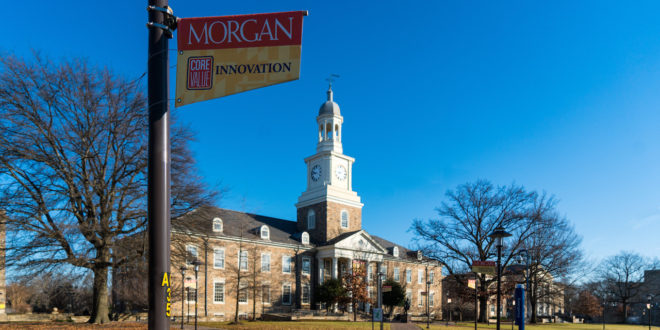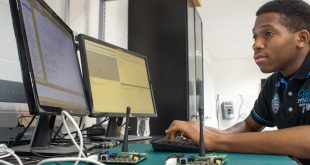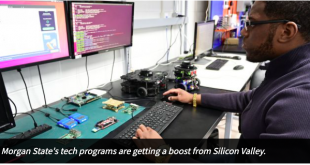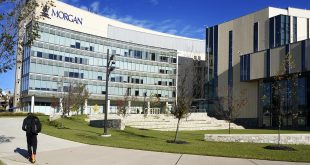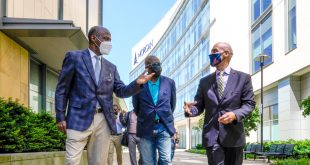MSU Faculty Inventors Contribute Innovation in Crucial Fields
BALTIMORE — Morgan State University (MSU) received three United States patents awarded in the spring and summer of 2020 — an unprecedented number for the university in a single year — for inventions conceived by teams that include Morgan faculty. The innovations are representative of the University’s commitment to evidence-based research designed to meet the needs and challenges of diverse stakeholder communities. MSU’s roster of patent-holding technologies bridge advancements in critical science, technology, engineering and math (STEM)-related fields including alternative energy, aquaculture, environmental remediation, and military and cellphone communications.
The recent awards bring to seven the total number of U.S. patents awarded to MSU, all since the university established its Office of Technology Transfer (OTT) in 2016. Last year, Morgan filed a record 20 new U.S. patent applications. Currently there are 26 U.S. utility patents pending in Morgan’s growing portfolio. In 2018, a report by an independent consultant revealed that Morgan generated significantly more patents and other key innovation outputs and outcomes per research dollar than the state and national averages for research universities.
The three patents awarded thus far this year include:
- Patent No. US 10,626,363, awarded to Morgan on April 21 for “Engineered Cyanobacteria with Enhanced Salt Tolerance,” an invention of Viji Sitther, Ph.D., MSU associate professor of biology, and Behnam Tabatabai, Ph.D., MSU lab manager. The team created a genetically modified strain of an algae-like microorganism named Fremyella diplosiphon, for the purpose of generating biofuel. The genetic alteration enables the cyanobacteria to grow in saltwater and produce lipids (oil) with limited exposure to light. The new characteristics greatly enhance the microorganism’s potential as a cost-effective, more environmentally friendly alternative to fossil fuels. In addition, the cyanobacteria produce other high value bio-products, such as nutraceuticals.
- Patent No. US 10,673,469, awarded to Morgan on June 2 for a “Multi-Band Multi-Mode Software Defined Radio,” which was created by a team of MSU researchers: Willie L. Thompson II, D.Eng., senior principal investigator of Morgan’s Center for Excellence in Tactical and Advanced Communication Technologies (CETACT) from 2009 to 2019, and Morgan engineers Samuel Berhanu and Jan-Paul Alleyne. The invention is a next-generation tactical communication systems device made with U.S. government support, under a contract awarded to Morgan by the Department of the Army. Software-defined radio is on the leading edge of innovation now: the devices are highly useful in military and cellphone communications, both of which require radios that handle a wide range of changing protocols in real time.
- Patent No. US 10,688,541, awarded to Morgan and a partnering company on June 23 for a “Portable Shellfish Basket Washer,” a three-part system that automates the time-consuming, manual process of cleaning and restoring the shellfish baskets used in the cultivation of oysters. Ted Cooney, founder of an oyster farming company named Madhouse Oysters, and Dong Hee Kang, Ph.D., assistant professor of civil engineering at Morgan, are the inventors of the system. Their invention may make a large impact on Maryland’s environment and the regional economy: the native oyster population of the Chesapeake Bay has declined to less than 1 percent of historical levels, lowering the quality of the water, shoreline, nutrients and oyster habitats, and weakening the once-lucrative oyster industry. Supporting oyster farming through automation is one way to reverse those trends.
“I congratulate our six new inventors for their outstanding work,” said Willie E. May, Ph.D., Morgan’s vice president for Research and Economic Development. “Their efforts spotlight Morgan’s current innovation boom, and it will assist us in reaching our goal of joining the country’s top 10 research universities in terms of innovation outputs indexed to research and development expenditures.”
Statistics verify the “boom” Dr. May mentioned. Innovations from Morgan researchers are pouring into the university’s OTT at a record rate of one every 13½ days, up from one every 15 days in 2019, and Morgan’s Division of Research and Economic Development (D-RED) anticipates rising numbers of patents awarded over the next three to four years.
OTT serves as a fully integrated center to manage the university’s intellectual property; works with faculty and staff to fulfill the university’s federal obligations with respect to transferring technologies; and interacts with industry to commercialize university intellectual property, foster economic development and ultimately increase the university’s resources to support its strategic goals.
Morgan has a track record of excellence in the humanities and liberal arts that dates back a century, and the university is gaining wider recognition now for its mounting research achievements in STEM and other fields. The Maryland General Assembly designated Morgan as the state’s Preeminent Public Urban Research University in May 2017. In December 2018, the Carnegie Classification of Institutions of Higher Education elevated Morgan to an R2 classification, a status reserved for doctoral universities with high research activity.
About Morgan
Morgan State University, founded in 1867, is a Carnegie-classified doctoral research institution offering more than 126 academic programs leading to degrees from the baccalaureate to the doctorate. As Maryland’s Preeminent Public Urban Research University, Morgan serves a multiethnic and multiracial student body and seeks to ensure that the doors of higher education are opened as wide as possible to as many as possible. For more information about Morgan State University, visit www.morgan.edu.
MEDIA CONTACT(S):
Larry Jones or Dell Jackson, University PR
(443) 885-3022
 Morgan State University Newsroom Morgan State University
Morgan State University Newsroom Morgan State University
